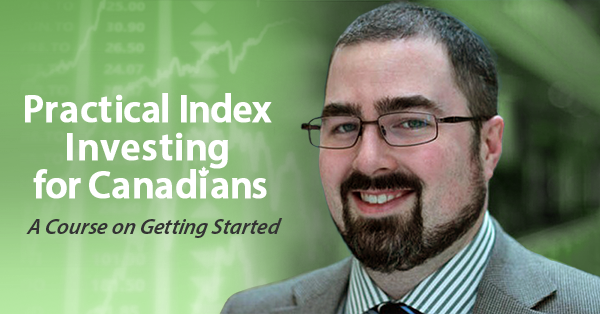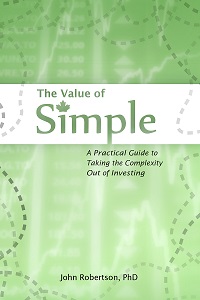Regulatory Burden
March 30th, 2014 by PotatoIn the comments to the first post on regulating financial advisors someone brought up the issue of regulatory burden: the extra paperwork and delays imposed on businesses. Nicole went so far as to call it “onerous” and “strangling” — and that’s just for the regulation already in place, which we’ve criticized as not providing enough protection.
There are lots of examples of regulatory burden out there, for many stakeholders. I regularly suggest that people go with TD Waterhouse to be able to invest in e-series funds over TD Mutual Funds because of the extra steps and forms needed to fill out and mail in to convert an account and the possible limitations of the KYC forms. I never got my CFP/CSC because it’s just not worth my time to take the courses and exam for what the designations would bring me; if something like that were to be a mandatory requirement to talk to clients about investing and their financial plans that would keep me and several other part-time educators/planners/coaches/DIY-support people out of business.
But a certain amount of form-filling, records-keeping, and education overhead should be expected in any business. The correct amount of regulatory burden is highly unlikely to be zero, and if it brings important consumer protections then that’s a good thing.
However, the way regulations and reporting are structured can have huge impacts on the eventual regulatory burden. Consider for example something I have some experience with: applying for a grant to do some medical research. You could apply to the US National Institutes of Health (NIH) and or to the Canadian Institutes of Health Research (CIHR). In both cases the basic document outlining the experiment you’re looking to fund would be say 13 pages. On top of that you’d have a detailed 5-year budget and a justification for the funds you were seeking, a half-page lay summary for the funding agencies to release to the press or the elected government representatives, and some kind of CV to demonstrate that you had the experience and ability to carry out the research you proposed.
Now both funding agencies take very seriously the protection of research participants and have fairly similar rules and regulations in place for that protection, but the implementation and regulatory burden is night and day in my mind. In Canada, your grant would now basically be complete: CIHR’s protection of research subjects rules are separate from the grant process, and all institutions sign on to it before they can enter a competition. They know that any research is going to be reviewed by a research ethics board that meets their standards, and will get a copy of the approval before releasing funds (if you’re successful in the first place). If the experiment calls for anything terribly out of the ordinary, then it’ll have to be explained in the proposal anyway. Compare this to the US, where the proposal part of the grant submission is almost like an afterthought to the stacks of appendices and tables that have to be filled out — including some that no one really seems to understand (including the NIH help staff I’ve spoken to), where you have to predict the racial breakdown for any proposed study (how many whites, blacks, asians, etc. will you recruit), but then also the “latino/non-latino ethnic breakdown” (how many latino asians vs non-latino asians will you include in your study??). It’s stressful and confusing (Spain and Portugal aren’t included in the countries of origin for people considered hispanic?) and totally bizarre (why do they care about this stuff? Will they really reject my grant over this?). For basically the same mandate and ultimate protection of research subjects, the regulatory burden is quite different between the agencies because of how they approach the problem and where they place the reporting requirements. By having so much paperwork up at the application stage it creates a lot of work for the ~80% of NIH applicants who will not get their grants funded because the scientific component wasn’t competitive enough for the severely limited funds.
Also, some protection comes with virtually no on-going regulatory burden. The Residential Tenancies Act sets out many protections for tenants, but aside from modifying what you can put into a lease there is no paperwork for landlords or tenants to fill out in the regular course of business beyond what you’d need anyway. Indeed, you get some of that for better than free: by standardizing certain terms, responsibilities, and practices they don’t have to be separately negotiated and drawn up in a lease. Everything is handled on an enforcement basis: only after a problem arises does someone end up having paperwork to fill out. Now at that point it can be very onerous (dealing with the LTB is no picnic, especially for landlords), mostly due to the delays involved. But for most people most of the time, it’s reasonably strong regulation with little overhead cost.
So I think that implementing a better model for financial advice and regulation thereof can be done in a way that minimizes the regulatory burden. It’s something that can and should be kept in mind as a new regulatory framework is thought out (especially the implementation aspect), and kept in balance with the benefits.


 Questrade: use QPass 356624159378948
Questrade: use QPass 356624159378948 Passiv is a tool that can connect to your Questrade account and make it easier to track and rebalance your portfolio, including the ability to make one-click trades.
Passiv is a tool that can connect to your Questrade account and make it easier to track and rebalance your portfolio, including the ability to make one-click trades.